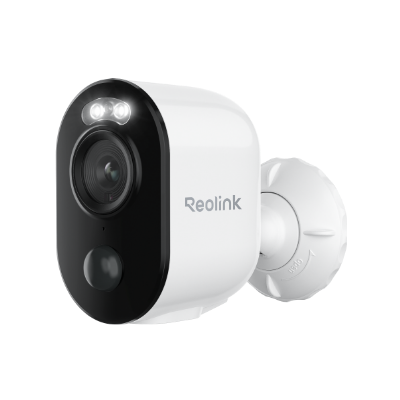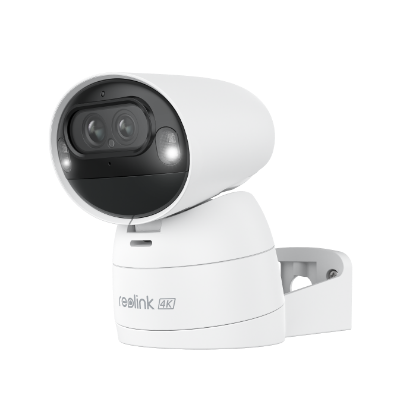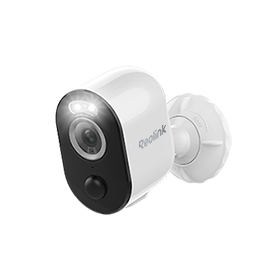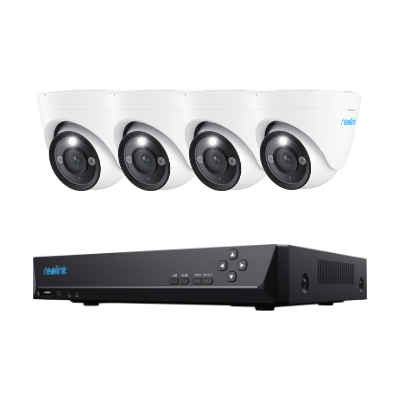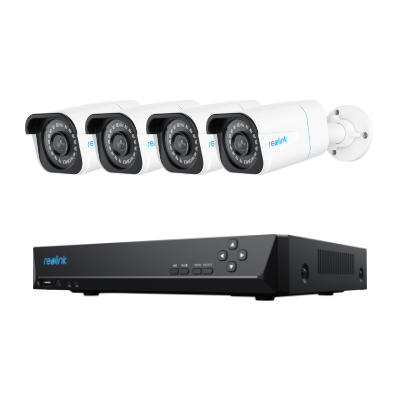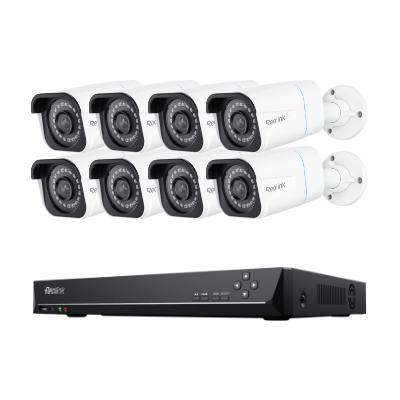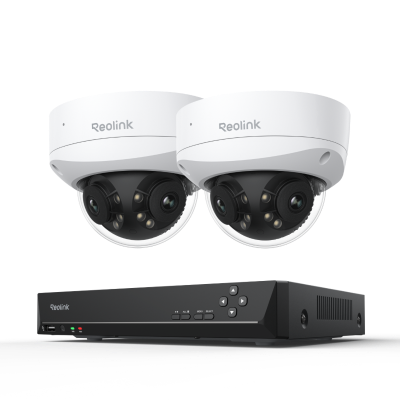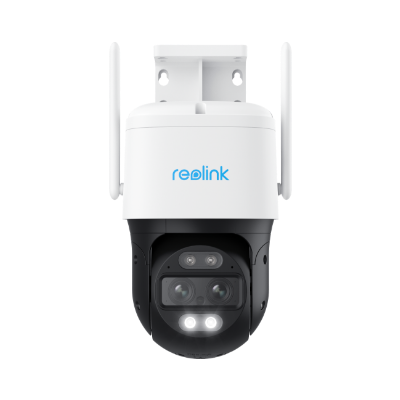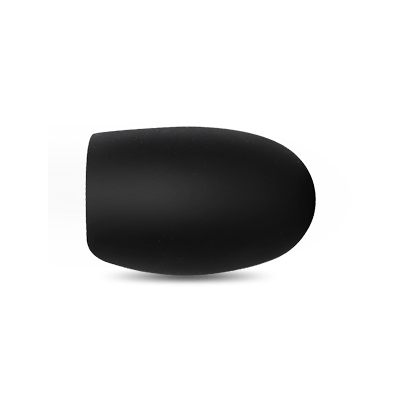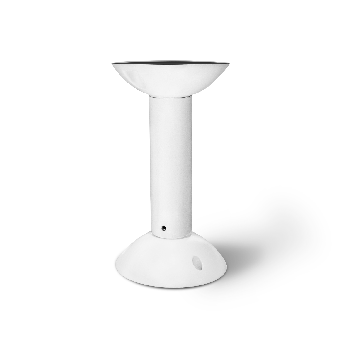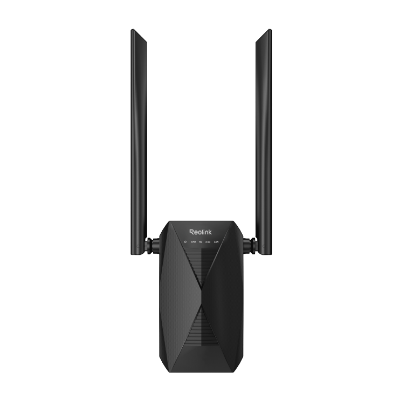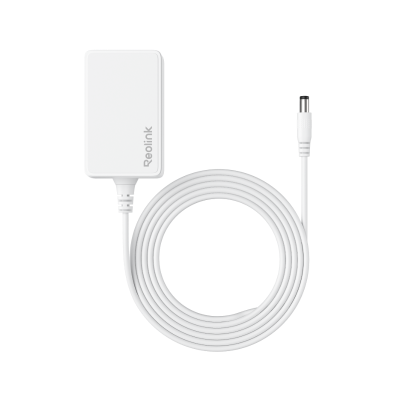What Is PoE? The Ultimate Guide to Power over Ethernet
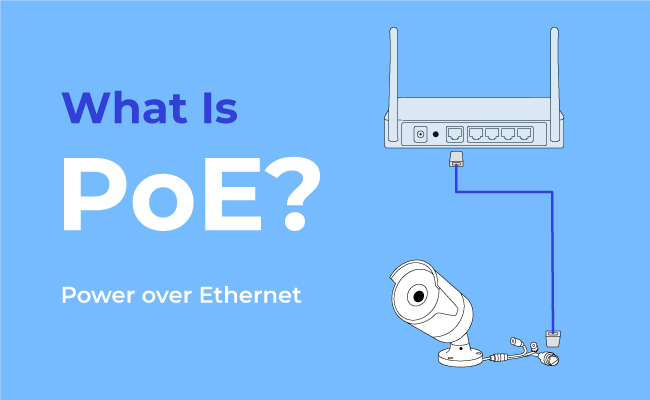
Power over Ethernet (PoE) is a networking solution that has become increasingly important for reliable and secure device connectivity. With PoE, devices like cameras, wireless access points, and IP phones can receive both power and data through a single Ethernet cable, which reduces cable clutter and expenses for users. The single cable also simplifies the installation process, making it an appealing option for users trying to improve their technology environments.
This post is a comprehensive guide to PoE that will explain what it is, how it works, and what types are available. We’ll also explore device compatibilities and the differences between PoE and PoE+ technologies. Whether you’re just getting started with PoE or looking to expand your knowledge, there is something here for you.
- What Is PoE?
- How Does Power over Ethernet Work?
- Pros and Cons of PoE
- What Are PoE Standards? PoE, PoE+, and PoE++ Explained
- Different Class Types of PoE
- Categories of Ethernet Cables for POE
- Considerations of choosing ethernet cables for PoE Applications
- What Devices Can Use PoE
- How to Add PoE to Your Existing Network
- FAQs of PoE Technology
- Conclusion
What Is PoE?
Power over Ethernet, or PoE, is a groundbreaking technology that was first invented in 1997. It was standardized in 2003 by the Institute of Electrical and Electronics Engineers (IEEE) to improve compatibility, and these initial standards paved the way for the first Internet of Things devices.
By using a single cable to deliver both power and web connectivity, PoE lowered some barriers to interconnected devices, which were suddenly much easier to install and maintain without the help of an electrician or cable specialist.
Besides, PoE allows devices to be placed anywhere within the reach of an Ethernet cable. This can include devices in difficult-to-reach locations or those that are far away from a power source or wall outlet.
Over the last two decades, the standard has been updated to accommodate new features and capabilities. Presently, PoE allows network devices to receive both data and electrical power through a single twisted-pair Ethernet cable that can deliver up to 51 watts and 1Gbps to powered devices.
How Does Power over Ethernet Work?
The concept behind PoE is fairly simple: by combining the transmission of power and data into one cable, it eliminates the requirement for separate power adapters, making it easier to deploy and maintain devices like IP cameras, wireless access points, and Voice over IP (VoIP) phones.
The primary components of PoE include power sourcing equipment (PSE) and the powered device (PD). The PSE is responsible for supplying power, and it can be either a PoE-enabled network switch or an external PoE injector, which adds power to an ethernet cable that isn’t compatible with PoE, such as a Cat4 or earlier cable.
The PD is the device that receives power and data, such as a wireless access point or IP phone. The PSE and PD communicate with each other via a Cat5 (or higher) ethernet cable to ensure the correct amount of power is provided, allowing for safe and efficient operation.
Pros and Cons of PoE
PoE or Power over Ethernet is a technology that allows electrical power to pass through Ethernet cabling. This essentially provides power to devices such as IP phones, wireless access points, and security cameras without the need for a separate power source. While PoE has many benefits, it also has some drawbacks that must be considered.
Benefits of PoE technology
-
Simplified installation: PoE reduces the need for separate power and data cables, making the installation process more straightforward and the environment less cluttered.
-
Cost-effective: By eliminating the need for additional power supplies and outlets, PoE can reduce overall installation and maintenance costs.
-
Flexibility: PoE allows for easier placement of network devices in hard-to-reach or remote locations where power outlets might be scarce or expensive to install.
-
Scalability: As the network grows, PoE can accommodate additional devices without the need for extensive rewiring or electrical work.
-
Centralized power management: PoE-enabled switches allow for centralized control and monitoring of the power supplied to devices, enabling better power management and efficiency.
-
Reliability: PoE networks can be connected to an uninterruptible power supply (UPS), ensuring continuous operation even during power outages. Additionally, whereas Wi-Fi can sometimes be interrupted or disconnected, ethernet is more stable.
-
Safety: PoE technology includes built-in safety features, such as power classification and overload protection, which prevent damage to both power sourcing equipment and powered devices. It is also more difficult for attackers to access an ethernet network.
Drawbacks of PoE technology
-
Limited power output: Depending on the PoE standard, there may be limits on the amount of power that can be supplied to a device, which might be insufficient for some high-power applications.
-
Distance limitations: PoE is limited by the maximum cable length for Ethernet, which is typically 100 meters (328 feet). This may restrict the placement of devices in larger installations.
-
Compatibility: Not all network devices are PoE-compatible, which might require the use of PoE splitters or adapters (also known as injectors) for certain applications.
-
Infrastructure costs: Initial investment in PoE switches or injectors can be higher than non-PoE equipment, potentially increasing upfront costs.
-
Cable quality: PoE relies on the quality of Ethernet cables to efficiently transmit power and data. Low-quality or damaged cables may lead to performance issues or device malfunctions.
What Are PoE Standards? PoE, PoE+, and PoE++ Explained
PoE standards are still defined by the IEEE and are based on the amount of power that can be delivered over the Ethernet cable and the method used to deliver that power. There are currently three PoE standards: PoE, PoE+, and PoE++.
The original PoE standard, also known as IEEE 802.3af, was introduced in 2003. It provides a up to 15.4 watts per port at the power sourcing equipment (PSE) and delivers a minimum of 12.95 watts to the powered device (PD). This standard is suitable for many low-power devices like IP cameras, VoIP phones, and basic wireless access points.
As devices became more powerful, they needed more than 12 watts to run effectively. The PoE+ standard, also known as IEEE 802.3at, was developed in 2009 to offer an increased power output compared to the original PoE standard. It can deliver up to 30 watts per port at the PSE and 25.5 watts to the PD.
PoE+ supports devices such as advanced wireless access points, PTZ cameras, and video conferencing equipment. Backward compatible with the original PoE standard, PoE+ allows devices that are compliant with the PoE standard to be powered by PoE+ switches.
The latest PoE standard, PoE++, also known as IEEE 802.3bt, was developed in 2018 and has two types, Type 3 and Type 4, that further increase power output. Type 3 provides up to 60 watts per port at the PSE (45 watts at the PD), while Type 4 offers up to 100 watts per port at the PSE and 71.3 watts at the PD.
This standard is suitable for even higher-power devices, such as video conferencing systems and lighting systems. PoE++ requires a special switch that is compliant with the standard to deliver this amount of power over the Ethernet cable.
In summary, the three standards provide different levels of power delivery, ranging from 15.4 watts to 100 watts. It is important to choose the right PoE standard for your specific application and to understand the power requirements of your devices to ensure that you have enough power to support your setup.
Different Class Types of PoE
Different classes of PoE are used to categorize the power requirements of powered devices (PDs) and to ensure compatibility with the power-sourcing equipment (PSE). There are four PoE class types defined by the Institute of Electrical and Electronics Engineers (IEEE) and the Internet Engineering Task Force (IETF), as follows:
Class 0: This class type does not provide any power and is not commonly used. It is included for completeness purposes only.
Class 1: This class type provides up to 3.84 watts of power and is suitable for low-power devices such as VoIP phones, wireless access points, and IP cameras.
Class 2: This class type provides up to 6.49 watts of power and is suitable for devices that require more power than Class 1 but still have low-power requirements, such as IP phones with larger displays or more advanced features.
Class 3: This class type provides up to 12.95 watts of power and is suitable for devices that require even more power, such as pan-tilt-zoom (PTZ) cameras, video conferencing equipment, and thin clients.
Class 4: This class type provides up to 25.5 watts of power and is suitable for high-power devices such as laptops, flat-screen TVs, and industrial equipment.
In PoE and PoE+ standards, Class 0 is reserved for devices with undefined or unclassified power requirements, ranging up to 12.95 watts at the PD (15.4 watts provided by the PSE).
IEEE 802.3bt (PoE++) standard introduced additional power classes, but to avoid confusion with the PoE and PoE+ standards, it uses a different classification system called "Type." This standard encompasses two types – Type 3 and Type 4 – as mentioned above.
It is important to note that not all PoE devices support all class types, and some PoE switches and routers may not support all class types either. Therefore, it is crucial to check the specifications of both the PoE devices and the switches or routers before deploying a PoE network. Additionally, some PoE devices may require a higher class than what they are rated for to deliver the optimal performance or to account for power losses over long cable runs. Therefore, it is recommended to consult with a PoE expert or vendor for guidance.
Categories of Ethernet Cables for POE
When you set up your PoE system, you’ll want to have and terminate cables that are appropriate for your needs. Ethernet cables come in various categories, and each category offers different performance capabilities and data transmission speeds. Cat4 or earlier cables will not work for PoE, but here are some options to consider:
- Cat5e: Cat5e (Category 5 enhanced) cables are widely used for networks supporting up to 1 Gbps data transmission rates. They are suitable for most standard PoE applications (IEEE 802.3af) and can handle up to 15.4 watts per device.
- Cat6: Cat6 cables offer improved performance over Cat5e cables, with support for data transmission rates up to 10 Gbps over distances up to 55 meters. They are compatible with PoE and PoE+ (IEEE 802.3at) applications, delivering up to 30 watts of power per device.
- Cat6a: Cat6a (Category 6 augmented) cables are an enhanced version of Cat6 cables, supporting data transmission rates up to 10 Gbps over distances of up to 100 meters. These cables are compatible with PoE, PoE+, and even 4PPoE (IEEE 802.3bt) applications, providing up to 100 watts of power per device.
Considerations of choosing ethernet cables for PoE Applications
When you are shopping for your PoE components, be sure to get a high quality, compatible cable. Here are some things to look for:
- Cable quality: High-quality cables from reputable manufacturers are less likely to have issues with power transmission or data integrity. Poor-quality cables can lead to power loss, data corruption, or damage to your devices.
- Cable shielding: Shielded cables (FTP, SFTP, or STP) can help reduce electromagnetic interference, improving signal quality and reliability in environments with high levels of interference.
- Cable length: Like an extension cord, an ethernet cable works best when you have accounted for the amount of power being transmitted over the cord’s length. The maximum distance for PoE applications is typically 100 meters (or 328 feet). Using longer cables can lead to power loss and reduced performance. If you need to extend your PoE beyond this limit, you can use PoE extenders, repeaters, or fiber-optic converters.
- Compatibility: Make sure the Ethernet cables you choose are compatible with the PoE standard being used in your network (IEEE 802.3af, IEEE 802.3at, or IEEE 802.3bt) and can handle the required power levels for your devices.
What Devices Can Use PoE
Power over Ethernet (PoE) technology is widely used across various devices and industries due to its ability to simplify installations and reduce cabling requirements. Here is a list of some common devices that use PoE:
- IP cameras: PoE makes it easy to install and power security cameras, including those in inconvenient locations, without the need for separate power sources. By using PoE, cameras and access points only require one cable for power and network connections, which can help cut installation costs and time.
- Wireless access points: PoE enables the deployment of wireless access points in optimal locations for signal coverage without requiring a nearby outlet.
- Voice over IP (VoIP) phones: PoE allows VoIP phones to operate without an additional power supply, reducing clutter and simplifying installation.
- Network switches: PoE-enabled switches can both receive power and deliver power to other devices via Ethernet cables. However, be sure that the switches you want to purchase are PoE-enabled as some are not.
- IoT devices: Internet of Things (IoT) devices, such as sensors, controllers, and smart home gadgets, can utilize PoE for easy installation and reliable connectivity.
- LED lighting: PoE-based lighting systems can be efficiently controlled and powered through Ethernet cables, offering energy savings and easy integration with building management systems.
- Access control systems: PoE simplifies the installation of security systems like door controllers, card readers, and biometric scanners by providing power and data over a single cable.
- Digital signage: PoE can power digital displays and kiosks, making it easier to deploy them in locations with few or no power outlets.
- Point of sale (POS) systems: PoE can be used to power POS devices like barcode scanners, receipt printers, and cash drawers, allowing for more flexible placement and reduced cabling.
- Video conferencing equipment: PoE can power video conferencing cameras, microphones, and other related equipment, simplifying the installation and setup of video conferencing systems.
How to Add PoE to Your Existing Network
If your existing network already supports PoE, you can easily connect and power your PoE-compatible devices. But if your existing network setup does not include PoE capabilities, you can still incorporate PoE technology by following these steps:
Identify the PoE requirements of your devices: Determine the power needs of your PoE-compatible devices, as well as the PoE standards they support (IEEE 802.3af, IEEE 802.3at, or IEEE 802.3bt). This information is usually found in the product specifications or user manual.
Choose the appropriate PoE equipment: Based on your devices' power requirements and the PoE standard they support, select the right PoE equipment to add to your network. This can include PoE switches, PoE injectors, or PoE midspans.
Connect PoE-compatible devices: Connect your PoE-powered devices to the chosen PoE equipment (switch, injector, or midspan) using Ethernet cables. Ensure the cable length does not exceed the maximum distance for PoE, which is typically 100 meters (328 feet).
Power on the PoE equipment: Turn on the PoE switch, injector, or midspan, and ensure that it provides the necessary power to your connected devices.
Configure and manage your network: With PoE devices connected and powered, you can now configure and manage your network as needed. Many PoE switches also offer advanced features such as VLAN, QoS, and centralized power management for better control and optimization of your network.
By following these steps, you can successfully add PoE capabilities to your network, enabling you to power and connect various PoE-compatible devices while simplifying your network infrastructure.
FAQs of PoE Technology
Do all routers support PoE?
No, not all routers support PoE. The majority of consumer-grade network routers do not have PoE capabilities, although some higher-end models may have limited compatibility. PoE functionality is more commonly found in external PoE switches or injectors that can be added to your network. When purchasing a router, you should check the specifications to determine if it supports PoE.
What is the max distance for PoE?
The maximum distance for PoE is limited by the Ethernet cable length, which is typically 100 meters (328 feet). This is the same distance limit for data transmission over standard Ethernet cables. To extend PoE beyond this limit, you can use PoE extenders, repeaters, or fiber-optic converters.
How do I choose between PoE and PoE+ for my specific application?
To choose between PoE (IEEE 802.3af) and PoE+ (IEEE 802.3at) for your application, consider the power requirements of your devices. If your devices require less than 12.95 watts of power, PoE should be sufficient. However, if your devices need more power (up to 25.5 watts), PoE+ would be the better choice. Always check the power requirements of your devices and ensure that your PoE equipment (switches or injectors) can provide the necessary power.
How do I determine if my devices are PoE compatible?
One feasible way is to refer to the product specifications or user manual. Look for mentions of PoE support, PoE standards (IEEE 802.3af, IEEE 802.3at, or IEEE 802.3bt), and the power requirements of the device. If your device is not natively PoE compatible but has an Ethernet connection, you can use a PoE splitter or adapter to separate the power and data components, allowing your device to utilize PoE technology.
Conclusion
Power over Ethernet is a versatile and convenient technology that can reduce the number of power supplies and cables in your environment, allowing you to have an organized and reliable system. Whether you are setting up a small home network or a large enterprise system, PoE can save you time, money, and hassle.
Overall, PoE is likely to play an increasingly important role in our lives due to its many conveniences and benefits for the ever-growing Internet of Things. As we increase the number of devices in our homes, it’s likely that PoE will be along for the ride.
If you have any thoughts or questions about PoE technology, leave them in the comments below. We’d love to hear from you!
Search
Subscribe for the Latest Updates
Security insights & offers right into your inbox







































